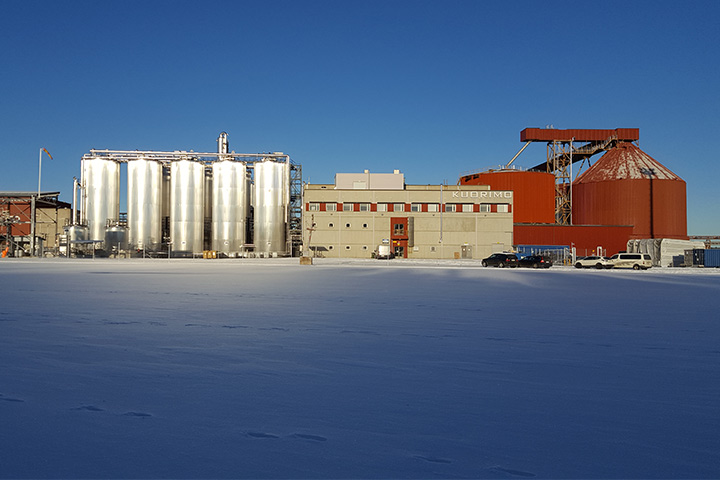Different types of biorefinery concepts create different types of bioproducts due to the raw materials and processes used. Ilona Järveläinen (Feedstock & Product Portfolio Manager), works with her team to evaluate raw material sources and commercialize biorefinery products.
“The St1 Cellunolix® solution utilizes sawdust from soft wood, such as pine and spruce, in advanced ethanol production. This solution also generates valuable bioproducts such as lignin, wood vinasse, furfural, biogas, and turpentine. Manufacturing advanced ethanol alone is not enough to bring biorefineries to profitable levels, and therefore a significant revenue stream must also be obtained from bioproducts. At the moment, lignin is the bioproduct we are working with that exhibits the greatest potential. It’s also the largest product of the Cellunolix® concept in terms of volume”, Järveläinen shared.

According to Järveläinen, the roadmap from the idea phase to a concrete product entering the market varies depending on the bioproduct. “We usually start the commercialization process by considering whether the bioproduct replaces an existing fossil product and if the two are of comparable quality. If this is the case, commercializing and entering the market with the bioproduct is easier because the market already exists. If it isn’t, we must go through the entire commercialization path and start to develop a market together with our partners.
First, the bioproduct is tested on a small scale in a laboratory to obtain product quality and application suitability information and analyses. Then it is piloted and finally commercialized carefully step by step”, said Järveläinen.
Järveläinen describes development work for bio-products as a collaboration with an extensive network of players. It involves cooperating with small and medium-sized companies as well as participating in large EU-wide projects with large consortia. These EU-wide projects involve the entire value chain, from the raw material producer to the technology developer and supplier, as well as end customers. Market knowledge and understanding the needs of partners and the end customer are crucial.
Partnerships and networks
“Development work is largely carried out in collaborative partnerships and networks. The aim of projects is to cover the entire value chain to obtain as many perspectives on development work as possible. For example, the LignoCOST EU project is a public and open network whose objective is to increase lignin expertise. Through the network, relevant information can be produced with a focus on lignin valorisation towards sustainable industrial applications. Customer and market understanding are key aspects in commercialization, so we really want to involve customer and market insight in all our development and commercialization projects”, Järveläinen asserted.
“Lifecycle analyses and product transparency are highly important issues for the entire value chain, and that’s why lifecycle analyses are also done for bioproducts. This is currently a basic requirement in many projects and from many customers”, said Järveläinen.
Järveläinen pointed out that because of wood lignin’s function as a binder, it is suitable as an adhesive for use in the resin industry, for example. Lignin is also widely studied in composites to replace plastic. Additionally, it has good product properties such as fire resistance and the ability to shield from UV radiation.
Replacing bitumen
“Bioasphalt is one area of interest that is being explored extensively. In this application, lignin replaces bitumen as it’s a good binder component in asphalt. Concrete plasticizers are another area of application. In addition, lignin is being studied in the pharmaceutical and cosmetics industries. Its use as an animal feed additive is also interesting for reducing carbon dioxide and methane emissions”, said Järveläinen.
The St1 Cellunolix® concept and the growth of the entire value chain of sawdust requires that all fractions will be utilized in the future. Besides bioethanol, thermochemical routes are one way to produce biofuels like renewable diesel and sustainable aviation fuels from forest industry residues. These routes produce biochar as a bioproduct.
“Biochar has an extensive repertoire of uses. It can be used in landscaping, in tying stormwater, or to replace activated carbon. Carbon foam is another new and interesting area to investigate.
It also has huge potential in steel industry and in the energy sector, replacing fossil carbon. The raw material base and fractions from which biofuels and other fractions are obtained will also expand. Biogas is an especially interesting and valuable area, and it could be used in the production of process energy. Biogas could still be used as a transport fuel in the future”, Järveläinen summarized, describing the outlook for bioproduct commercialization in the future.

